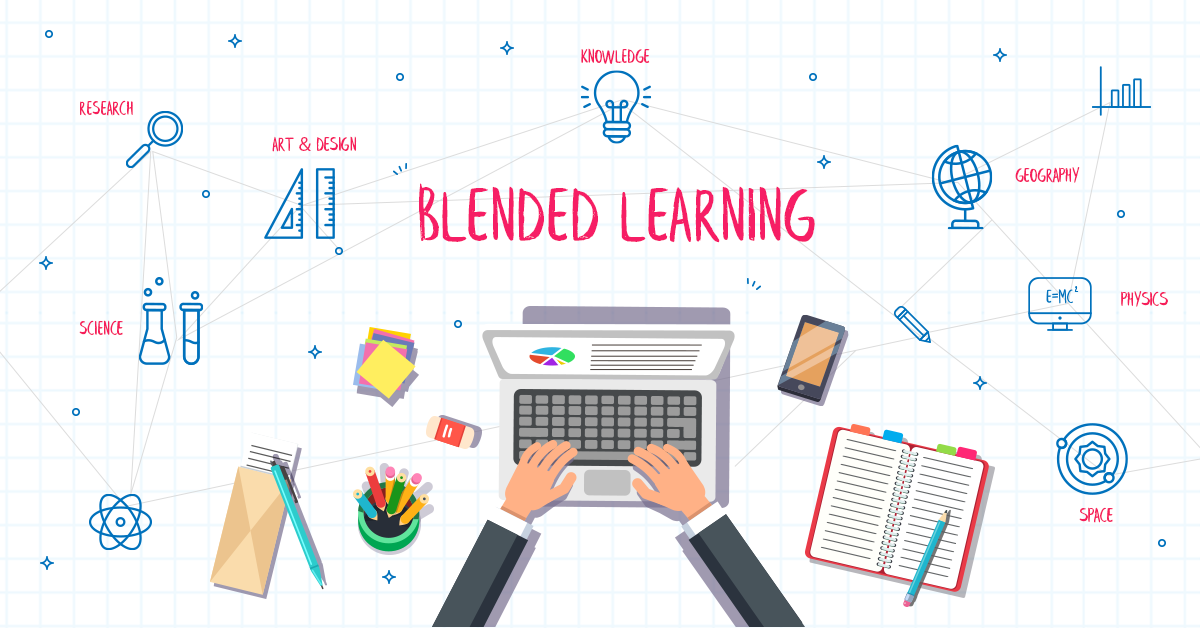In the eLearning industry, Blended Learning is considered to be an evolution of learning methodology, as it combines two distinct modes of learning: the face-to-face training called instructor-led training (ILT) and the self-learning mode, in which the courses are loaded onto a standalone computer – for computer-based training (CBT) or on a web server – for web-based training (WBT). Before we delve deep into this advanced mode of learning, let us get to know the basics of education methods.

Formal vs. Informal Education
Education that a person gets during his/her childhood, usually imparted by an institution, is considered as “formal education.” Because, after completing this, the person is certified to have learnt the relevant concepts (and earned a qualification!). Formal education is usually longer – it typically consumes years together – and the entire childhood is spent on this, making the person ready for the adult life.
On the contrary, those bits and pieces of training a person gets, usually after the formal education or during the job, is considered as informal education. While some training, such as a computer course by an institute offer certificates, others generally do not offer any certificates. Also, informal education is shorter compared to formal education, and is always aligned to a particular skill.
The Two Fundamental Modes of Education
Now, let us get back to the types described in the first paragraph: ILT involves an instructor while this is not the case with CBT/WBT. Though we term it as ‘instructor-led training,’ for the sake of clarity, let us call it as a type of ‘learning’ – because ultimately, it considers the learner and not the trainer. Same applies to the other mode also.
Both ILT and CBT/WBT are widely used in informal education, or, for training the workforce. That is, when the working people need to know about a new concept related to their work—for example, about a newly installed machine or software. However, the changing scenarios have proved that these modes are not restricted only to informal education.
Redefining ‘Formal’ Rather, Education
In fact, some countries have shown that both ILT and CBT/WBT can be used effectively in formal education also. Note that ILT resembles the classroom scenario that is typical of formal education. Only the self-learning part looked different as people had reservations about children learning on their own – without supervision. However, this notion is fundamentally flawed: let us see why.
Think about what your little princess or prince did when you gave the TV remote to them for the first time. Did you tell them the channel number on which Pogo is available? Or for that matter, all the plethora of kids’ channels, whose numbers you DID NOT even know, but they came to know?
So, children DO learn themselves. Without any of our ‘lessons’. Ever. In other words, children do learn outside of our lessons too. It is our ‘adult-size’ assumption that makes us feel that children learn only because we teach them. Not quite, right?
This clarity, when combined with a need of staying back home, led to a different type of formal education: homeschooling. As an accepted method, homeschooling is practised in many countries by parents whose wards cannot go to a school, for various reasons. And apparently, these students learn a few lessons with their parents, at home.
The Heralding of Online (Formal) Education
For starters, homeschooling also needs to follow a curriculum; it also means that the students read and practice with a set of textbooks and other learning materials; and the best part is, these students get the help of a teacher, when required! Yes, it is the same as home tuition, except for the curriculum and certification!
Homeschooling, as a mass movement, actually started during 1980s when some people started thinking that children learn better from a home environment, rather than from a school environment. Subsequently, it received legal status also, ensuring that the students opting for this mode too earn a certification like those who study at the institutions.
With the advent of technology, teachers started using online mode to teach these students. And the Covid-19 pandemic had only boosted the numbers in a phenomenal way. On the other hand, use of computers and multimedia has been in practice within schools, for the last few decades. Therefore, neither computers nor online mode are new to formal education.
So, What’s Next?
Human have the potential to fulfil the needs with the help of technology. When there is a need for learning from home, we accomplished it with online classes. It is also the human nature to use any invention or idea to its fullest levels: when the learning professionals discovered that a blend of ILT and CBT/WBT could yield more effective results, they applied this method at appropriate times.
In the last academic year, almost all schools followed the online mode, and in the learning domain, it is referred to as virtual ILT (VILT). Now it’s the time for the schools to utilize the more appropriate Blended Learning mode, as it allows continued as well as complete learning by offering the best of both worlds (campus learning + learning at home).
How Will it Work?
Having said that it’s open for the schools to adopt a powerful tool for the sake of their students, it is up to the schools to design this program to elicit the expected performance. It involves many factors including the duration, the pedagogy, the learning and teaching aids, the use of appropriate tools, a special curriculum that caters to this unique scenario, etc.
Fine! But Blended Learning also requires parents’ acceptance. Are you ready for an all-new learning journey? Be informed and take wise decisions! All the best!!
